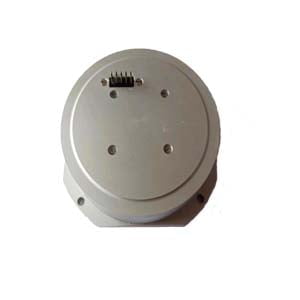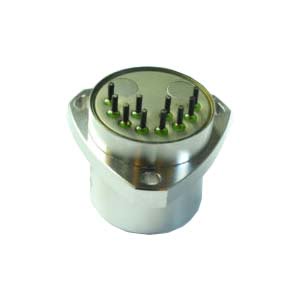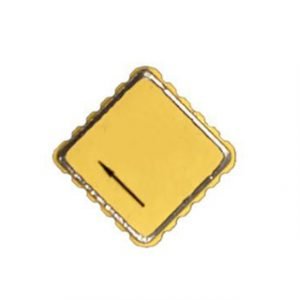For those unfamiliar with such products, the gyroscope sensor is a simple and easy-to-use positioning and control system based on free space movement and gesture. Wave the mouse on the imaginary plane, and the cursor on the screen will move with it, and you can draw circles around the link and click the key. These operations can be easily implemented when you are giving a speech or leaving the table. The gyroscope sensor was originally applied to the helicopter model, and has been widely used in mobile portable devices such as mobile phones (IPHONE's three-axis gyroscope technology).
The principle of gyroscope is that the direction of the rotation axis of a rotating object will not change when it is not affected by external forces. According to this principle, people use it to maintain direction. Then, read the direction indicated by the shaft with various methods, and automatically transmit the data signal to the control system. We actually use this principle when riding bicycles. The faster the wheel turns, the less easy it is to reverse, because the axle has a force to keep it level.
Modern gyroscope is an instrument that can accurately determine the direction of moving objects. It is an inertial navigation instrument widely used in modern aviation, navigation, aerospace and national defense industries. The main part of traditional inertial gyroscopes is mechanical gyroscopes, and mechanical gyroscopes have high requirements on the technological structure. In the 1970s, the basic idea of modern fiber optic gyroscope was put forward. After the 1980s, fiber optic gyroscope has developed very rapidly, and laser resonant gyroscope has also developed greatly. Fiber optic gyroscope has compact structure, high sensitivity and reliable operation. Fiber optic gyroscope has completely replaced the traditional mechanical gyroscope in many fields and become the key component of modern navigation instruments. Fiber optic gyroscope is developed at the same time except ring laser gyroscope.
Application of gyroscope sensor
1. National defense industry: The gyroscope sensor was originally applied to the helicopter model, but now it has been widely used in mobile portable devices such as mobile phones. Not only that, the modern gyroscope is an instrument that can accurately determine the direction of moving objects, so the gyroscope sensor is an indispensable control device in modern aviation, navigation, aerospace and national defense industry applications. The gyroscope sensor was named by French physicist Leon Foucault when he studied the earth's rotation. Until now, it has been the most convenient and practical reference instrument for navigation attitude and speed in aviation and navigation.
2. Door opening alarm: new application of gyroscope sensor: measure the opening angle of the door. When the door is opened at an angle, an alarm will sound, or a message will be sent in combination with the GPRS module to remind that the door is opened. In addition, the gyroscope sensor integrates the function of the acceleration sensor. When the door is opened, a certain acceleration value will be generated, and the gyroscope sensor will measure the acceleration value. When the preset threshold value is reached, an alarm will sound, or a message will be sent in combination with the GPRS module to remind that the door is opened. The alarm can also be integrated with the radar induction measurement function, which is mainly used to detect people moving in the room. The double insurance reminds against theft, with high reliability and low false alarm rate, which is very suitable for anti-theft alarm in important occasions.
Ericco has many types of gyro sensors, among which MEMS sensors are very popular. We have north seeking gyroscopes, navigation gyroscopes, etc. If you want to get more technical data, please feel free to contact us.
The acceleration sensor is an electronic device that can measure the acceleration force. The acceleration force is the force exerted on the object during the acceleration process, just like the earth's gravity, namely gravity. The acceleration force can be a constant, such as g, or a variable. There are two kinds of accelerometers: one is angular accelerometer, which is improved by gyroscope (angular velocity sensor). The other is linear accelerometer.
The principle of linear accelerometer is inertial principle, that is, force balance. A (acceleration)=F (inertial force)/M (mass) We only need to measure F. How to measure F? Use electromagnetic force to balance this force. Then we can get the relationship between F and current. Just use the experiment to calibrate the scale factor. Of course, the signal transmission, amplification and filtering in the middle are circuits.
Most acceleration sensors work according to the principle of piezoelectric effect.
Application of acceleration sensor
By measuring the acceleration caused by gravity, you can calculate the inclination of the equipment relative to the horizontal plane. By analyzing the dynamic acceleration, you can analyze the way the device moves. But at the beginning, you will find that measuring the inclination and acceleration by light is not very useful. However, engineers have come up with many ways to get more useful information.
Difference between gyroscope sensor and acceleration sensor
Gyroscope measures angular velocity, and acceleration measures linear acceleration. The former is the principle of inertia, and the latter is the principle of force balance.
The measured value of accelerometer is correct in a long time, but there is error in a short time due to the existence of signal noise. Gyroscopes are more accurate in a short time, and there will be errors due to drift in a long time. Therefore, both (mutual adjustment) are required to ensure correct heading.
More Technical Questions
1.How to Choose an Inertial Sensor – the Choice of a Gyroscope
2.What’s a Gyroscope do? You Can See that From the Application of the Balance Car
3.The Difference and Selection of Gyroscope and Tilt Sensor
4.How to Choose an Inertial Sensor – the Choice of a Gyroscope
5.Analysis of Typical Applications of MEMS Sensors
6.Background and Development Status of MEMS Inertial Sensors
Products in Article







